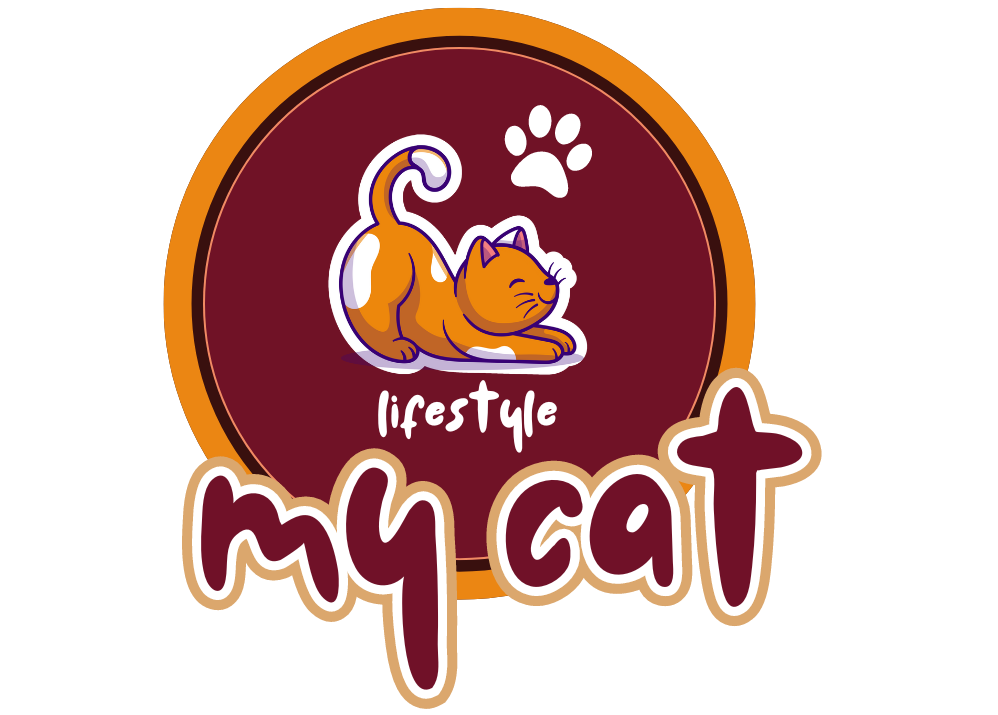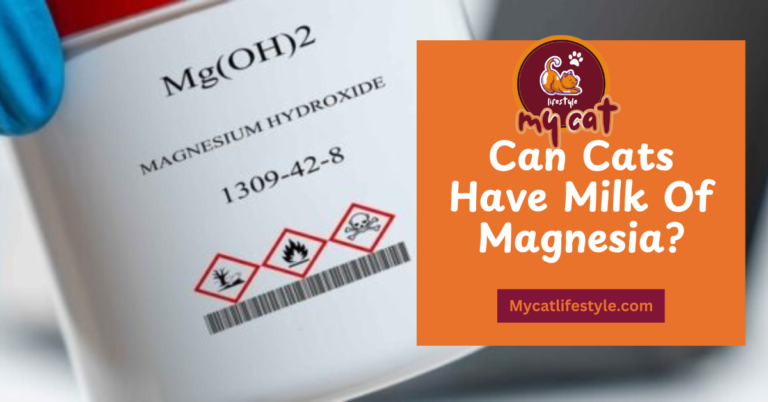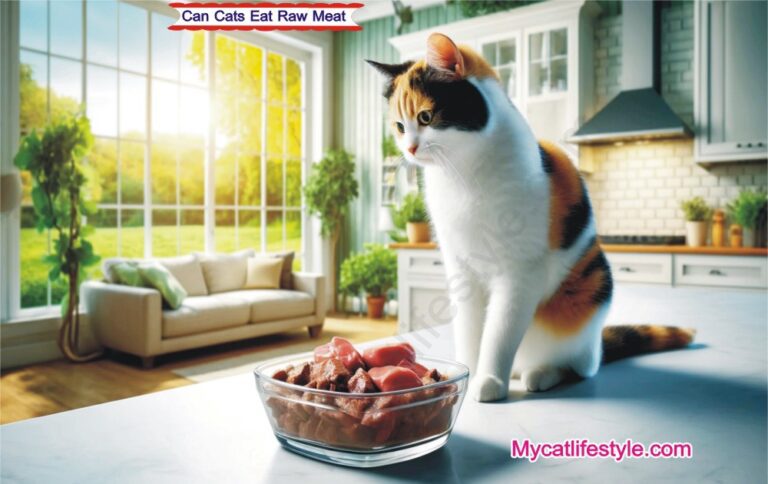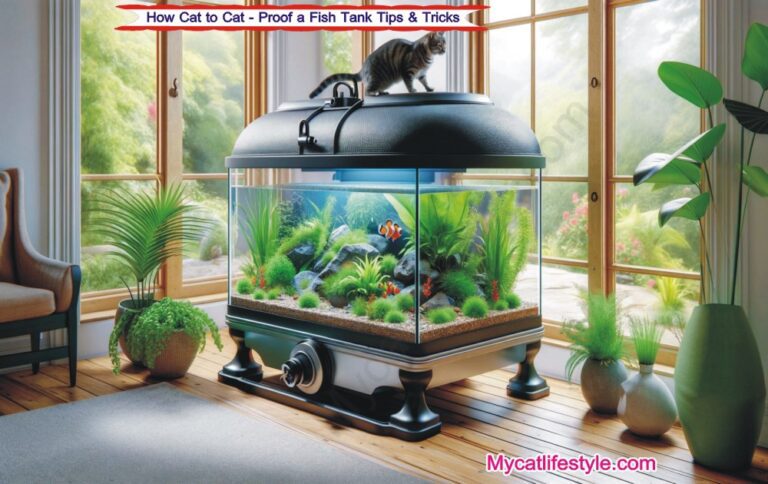How much pumpkin to give my cat for constipation?
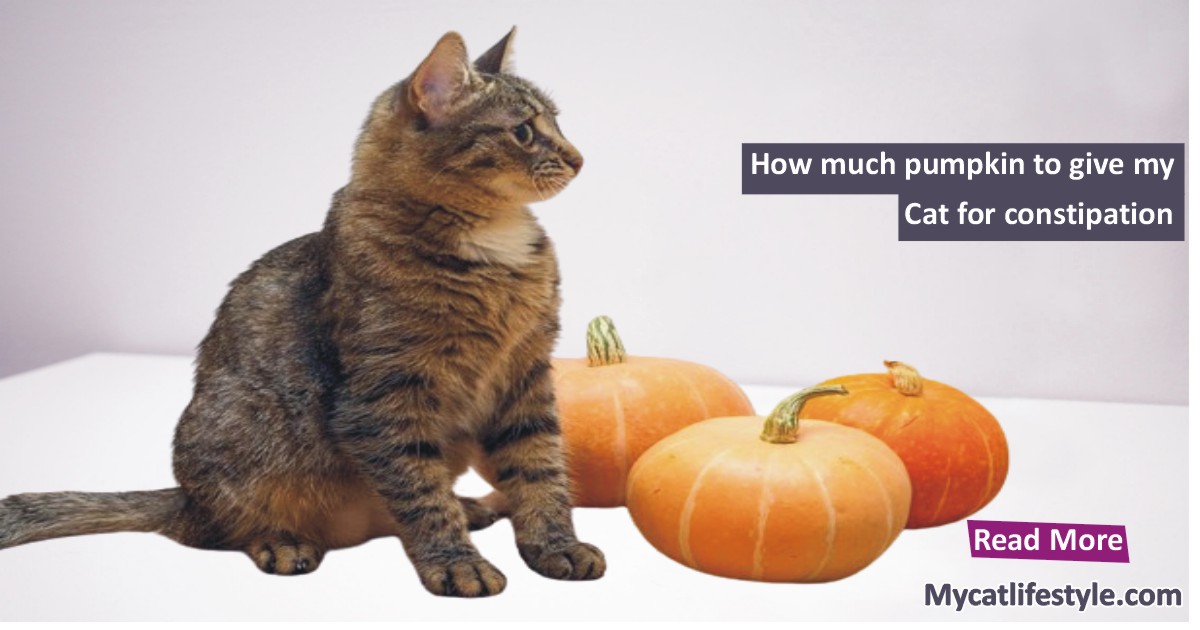
If your feline friend is experiencing constipation, you may have heard that pumpkin can be a natural remedy to help alleviate their discomfort. Pumpkin is indeed a popular option for treating constipation in cats due to its high fiber content and gentle laxative properties. However, knowing how much pumpkin to give your cat is crucial to ensure its effectiveness without causing any adverse effects.
In this guide, we’ll explore the appropriate dosage of pumpkin for cats dealing with constipation, along with some additional tips to help promote digestive health in your furry companion.
When it comes to using pumpkin as a remedy for constipation in cats, moderation is key. While pumpkin can be beneficial in promoting bowel movements, giving your cat too much can lead to diarrhea or other gastrointestinal issues. It’s essential to carefully measure the amount of pumpkin you offer to your cat and to introduce it gradually into their diet. By following these guidelines, you can help support your cat’s digestive system and provide relief from constipation in a safe and effective manner.

How much pumpkin to give my cat for constipation?
Constipation in cats can be uncomfortable and distressing for both the feline and their owner. Fortunately, pumpkin can serve as a safe and effective remedy to help alleviate this issue. However, determining the right amount of pumpkin to give your cat is crucial for optimal results.
Signs of Constipation
Before addressing the amount of pumpkin to give your cat, it’s important to recognize the signs of constipation in felines. Some common indicators include:
- Infrequent or difficult bowel movements
- Straining in the litter box
- Small, hard, or dry stools
- Lethargy or discomfort
- Loss of appetite
If you notice any of these symptoms in your cat, it may be experiencing constipation and could benefit from the addition of pumpkin to its diet.
How Much Pumpkin to Give My Cat?
When it comes to administering pumpkin to your cat for constipation relief, moderation is key. The appropriate dosage depends on the size and weight of your cat. As a general guideline, start with a small amount, such as one to two teaspoons of canned pumpkin puree, mixed into your cat’s food.
For larger cats, you can gradually increase the dosage to two to four teaspoons per day, divided into multiple meals. It’s essential to monitor your cat’s response and adjust the dosage accordingly. If you’re unsure about the right amount for your cat, consult your veterinarian for personalized guidance.
What Should I Do If My Cat Eats too Much Pumpkin?

While pumpkin is generally safe for cats, consuming too much can lead to digestive upset. If your cat eats an excessive amount of pumpkin, it may experience diarrhea or other gastrointestinal issues. In such cases, it’s crucial to provide plenty of fresh water to help flush out the system and monitor your cat closely for any signs of discomfort.
Additionally, you may need to temporarily reduce or eliminate the pumpkin from your cat’s diet until its digestive system returns to normal. If your cat’s symptoms persist or worsen, consult your veterinarian for further evaluation and treatment.
In conclusion, pumpkin can be a beneficial remedy for constipation in cats when administered in the appropriate dosage. By paying attention to your cat’s symptoms and adjusting the amount of pumpkin accordingly, you can help promote digestive health and alleviate discomfort in your furry companion.
Related post: My Cat Stopped Purring When I Got A New Kitten – Exploring
How fast does pumpkin work for cat constipation?
When dealing with a constipated cat, pet owners often seek quick relief for their furry friend’s discomfort. Understanding how fast pumpkin can work to alleviate cat constipation is crucial for managing the condition effectively.Pumpkin is known for its high fiber content and natural laxative properties, making it an effective remedy for constipation in cats. However, the speed at which pumpkin works can vary depending on several factors, including the severity of the constipation and the individual cat’s response to the treatment.

In general, pumpkin can start to have a noticeable effect on a cat’s bowel movements within 12 to 24 hours after ingestion. The fiber in pumpkin helps to bulk up the stool and promote regular bowel movements, while its natural enzymes aid in softening the stool, making it easier for the cat to pass.It’s important to note that while pumpkin can provide relief relatively quickly for some cats, it may take longer for others, especially if the constipation is more severe. In such cases, multiple doses of pumpkin over several days may be necessary to fully alleviate the constipation.
Overall, while pumpkin can be an effective remedy for cat constipation, it’s essential to be patient and consistent with the treatment. If you don’t notice an improvement in your cat’s condition after a day or two of administering pumpkin, or if the constipation persists or worsens, consult your veterinarian for further evaluation and guidance.
What type of pumpkin to give my cat?
When considering pumpkin as a remedy for cat constipation, choosing the right type of pumpkin is essential to ensure safety and effectiveness. Here are the various options for providing pumpkin to your cat:
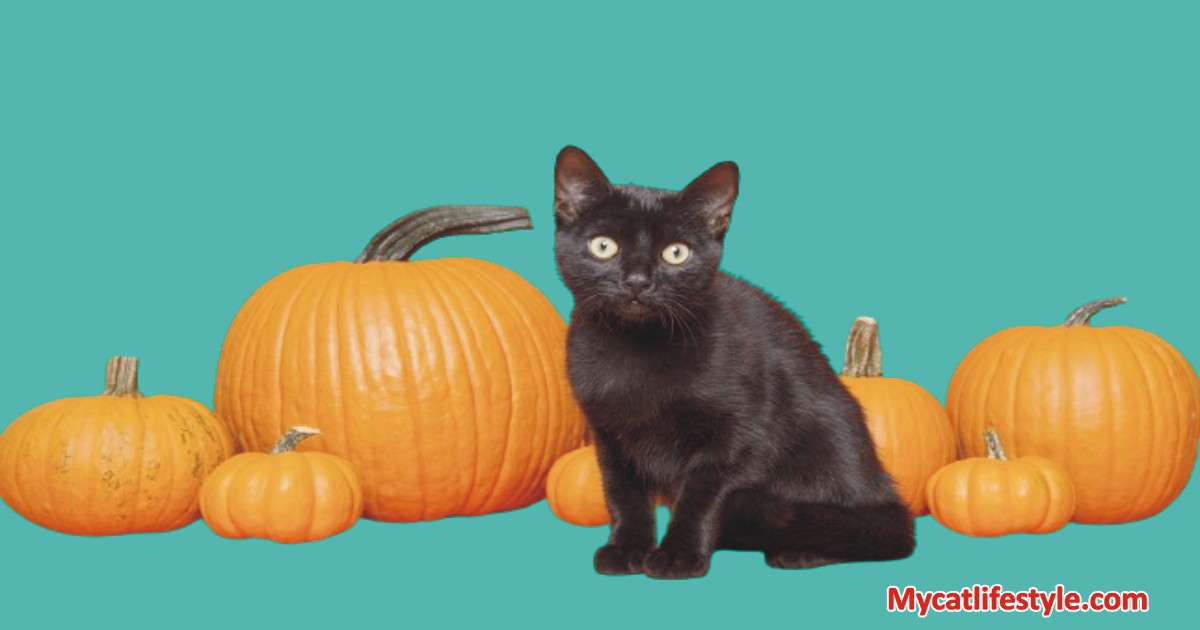
Canned Pumpkin
Canned pumpkin is a convenient option for cat owners, as it is readily available in most grocery stores year-round. However, it’s crucial to select plain canned pumpkin without any added sugar, spices, or other ingredients. Look for 100% pure pumpkin puree with no additives or preservatives.
Fresh Pumpkin
Fresh pumpkin is another option for providing fiber and moisture to your cat’s diet. You can purchase whole pumpkins from the grocery store or farmers’ market and prepare them at home. Simply remove the seeds and stringy pulp, then cook or puree the pumpkin flesh before offering it to your cat.
Pumpkin Puree
Pumpkin puree, whether canned or homemade, is a popular choice for cat owners looking to add fiber to their cat’s diet. Ensure that the pumpkin puree is plain and free from any added ingredients. You can mix a small amount of pumpkin puree into your cat’s food to encourage regular bowel movements.
Pumpkin Seeds
Pumpkin seeds are rich in fiber and can also be beneficial for cats with constipation. However, it’s essential to remove the outer shell and only offer your cat the inner seed kernel. You can crush or grind the pumpkin seeds and sprinkle them over your cat’s food for added fiber and nutrients.
Overall, whether you choose canned pumpkin, fresh pumpkin, pumpkin puree, or pumpkin seeds, the key is to offer it in moderation and ensure that it is free from any additives or harmful ingredients. By selecting the right type of pumpkin for your cat and incorporating it into their diet appropriately, you can help promote digestive health and alleviate constipation in your furry friend.
Is pumpkin good for cats?
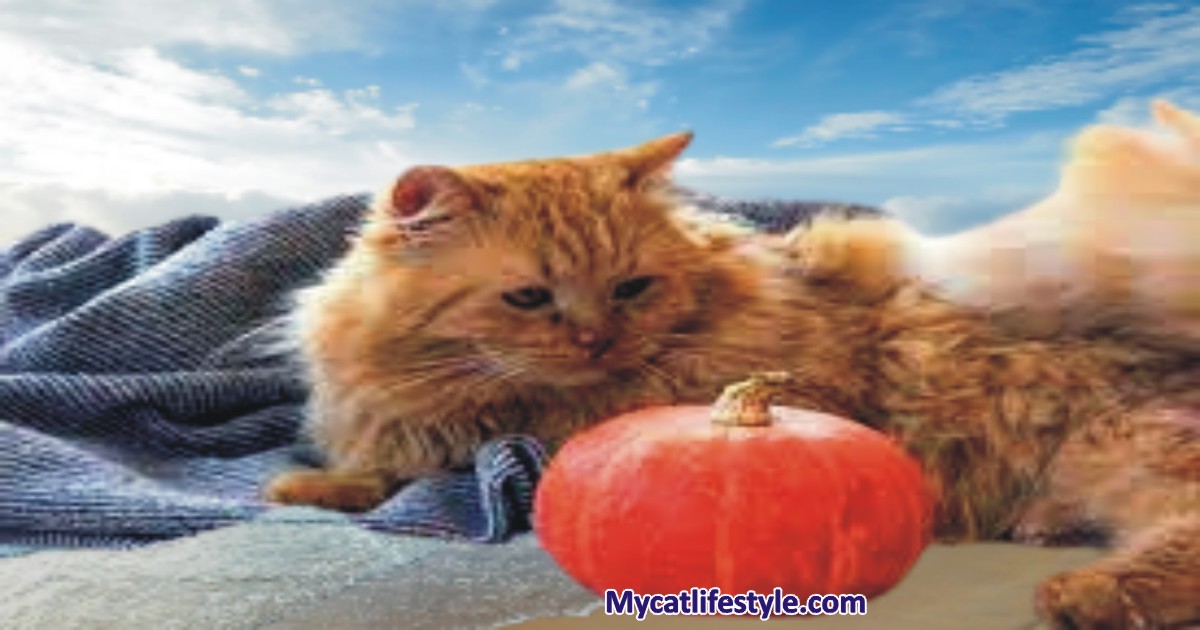
As a cat owner seeking natural remedies for constipation, you may wonder about the overall benefits of pumpkin for your furry companion. Let’s explore why pumpkin is considered beneficial for cats:
Fiber
One of the primary reasons pumpkin is recommended for cats with constipation is its high fiber content. Fiber plays a crucial role in promoting healthy digestion by adding bulk to the stool and facilitating regular bowel movements. By including pumpkin in your cat’s diet, you can help prevent and alleviate constipation by promoting smoother and more efficient digestion.
Vitamins
In addition to fiber, pumpkin is rich in essential vitamins that are beneficial for overall feline health. It contains vitamins A, C, and E, which are important for supporting the immune system, maintaining healthy skin and coat, and promoting overall well-being in cats. By incorporating pumpkin into your cat’s diet, you can provide these essential vitamins to help keep your furry friend happy and healthy.
Zinc and Cucurbitacin
Pumpkin also contains trace amounts of zinc and cucurbitacin, which are compounds that may offer additional health benefits for cats. Zinc is an essential mineral that supports various bodily functions, including immune function, wound healing, and protein synthesis. Cucurbitacin is a naturally occurring compound found in pumpkin that may have anti-inflammatory and antioxidant properties, further contributing to your cat’s overall health and well-being.
Pumpkin is not only a natural remedy for constipation in cats but also a nutritious addition to their diet. By providing your cat with pumpkin, you can help support healthy digestion, provide essential vitamins, and offer potential additional health benefits. As with any dietary change, it’s essential to introduce pumpkin gradually and monitor your cat’s response to ensure optimal health and well-being.
How to get my cat to eat pumpkin?

Encouraging your cat to consume pumpkin can be a simple and effective way to promote digestive health and alleviate constipation. Here are some tips for getting your cat to eat pumpkin:
Add It to Their Food
One of the easiest ways to introduce pumpkin to your cat’s diet is by mixing it into their regular food. Start by adding a small amount of pumpkin puree or canned pumpkin to their food bowl and gradually increase the quantity over time. Mixing pumpkin with your cat’s favorite wet or dry food can help mask any unfamiliar taste and encourage them to eat it willingly.
Fresh Pumpkin
If your cat prefers fresh ingredients, you can offer them small pieces of cooked or pureed fresh pumpkin. Remove the seeds and stringy pulp, then cook or puree the pumpkin flesh before offering it to your cat. You can mix the fresh pumpkin into their food or offer it as a standalone treat.
Frozen Pumpkin
Another option for introducing pumpkin to your cat is by freezing it into small cubes or treats. Simply puree or mash the pumpkin, then spoon it into ice cube trays and freeze until solid. You can offer these frozen pumpkin cubes to your cat as a refreshing and nutritious treat, especially during hot weather.
Pumpkin Seeds
If your cat enjoys crunchy textures, you can offer them roasted or crushed pumpkin seeds as a snack. Remove the outer shell and only offer your cat the inner seed kernel. You can sprinkle crushed pumpkin seeds over their food or offer them as a standalone treat for a healthy and satisfying snack.
Getting your cat to eat pumpkin is patience and persistence. Experiment with different methods of incorporating pumpkin into their diet to find what works best for your furry friend. By offering pumpkin in a variety of forms and gradually introducing it into their routine, you can help promote digestive health and ensure that your cat receives the benefits of this nutritious ingredient.
Should I Feed My Cat Pumpkin Every Day?
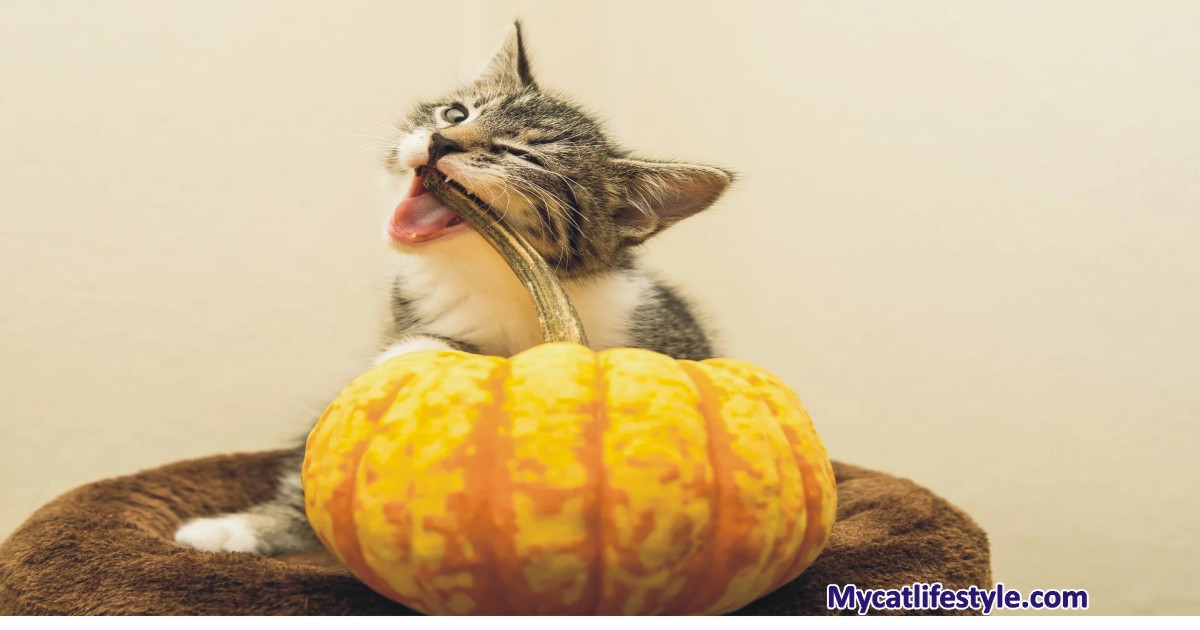
While pumpkin can be a beneficial addition to your cat’s diet, it’s essential to consider whether feeding it every day is appropriate for your furry friend. Here are some factors to keep in mind when deciding whether to incorporate pumpkin into your cat’s daily routine:
Moderation is Key
Like any dietary supplement, pumpkin should be given to cats in moderation. While pumpkin can help alleviate constipation and promote digestive health, feeding it to your cat every day may not be necessary and could potentially lead to digestive upset or other issues. It’s important to strike a balance and provide pumpkin as needed to address specific digestive concerns without overdoing it.
Consult Your Veterinarian
Before making any significant changes to your cat’s diet, including the addition of pumpkin, it’s always a good idea to consult with your veterinarian. Your vet can provide personalized guidance based on your cat’s individual health needs and dietary requirements. They can help determine whether incorporating pumpkin into your cat’s diet on a regular basis is appropriate and advise on the optimal dosage and frequency.
Consider Your Cat’s Overall Diet
In addition to pumpkin, it’s essential to consider your cat’s overall diet and nutritional needs. A balanced diet that meets all of your cat’s nutritional requirements is crucial for their health and well-being. If you’re considering feeding your cat pumpkin every day, ensure that it complements their existing diet and doesn’t replace essential nutrients or lead to imbalances.
Monitor Your Cat’s Response
As with any dietary change, it’s essential to monitor your cat’s response to feeding them pumpkin regularly. Pay attention to their digestive health, including the frequency and consistency of their bowel movements, as well as any signs of gastrointestinal upset or discomfort. If you notice any adverse effects or changes in your cat’s health, consider adjusting the amount or frequency of pumpkin or discontinuing it altogether.
while pumpkin can be a beneficial addition to your cat’s diet for promoting digestive health, feeding it every day may not be necessary or appropriate for all cats. It’s essential to consider factors such as moderation, consultation with your veterinarian, your cat’s overall diet, and monitoring their response to determine the best approach for incorporating pumpkin into their routine. By taking these factors into account, you can make informed decisions about your cat’s dietary health and well-being.
Frequently Asking Questions
How fast does pumpkin work for cat constipation?
Pumpkin can start to have a noticeable effect on a cat’s bowel movements within 12 to 24 hours after ingestion. The fiber in pumpkin helps bulk up the stool and promotes regular bowel movements, while its natural enzymes aid in softening the stool, making it easier for the cat to pass.
How much pumpkin can I feed my cat?
The appropriate amount of pumpkin to feed your cat depends on its size and weight. As a general guideline, start with a small amount, such as one to two teaspoons of canned pumpkin puree, mixed into your cat’s food. For larger cats, you can gradually increase the dosage to two to four teaspoons per day, divided into multiple meals.
How do you constipation a cat?
There are several methods for constipating a cat, including increasing fiber intake through dietary supplements like pumpkin, ensuring adequate hydration, promoting exercise and physical activity, and providing regular grooming to prevent hairballs. In severe cases, your veterinarian may recommend prescription medications or procedures to address the underlying cause of constipation.
Can cats eat pumpkin raw?
While cats can technically eat raw pumpkin, it’s not recommended as it may be difficult for them to digest. It’s best to offer cooked or pureed pumpkin to your cat, as this form is easier for them to consume and digest.
How much pumpkin to give my cat for constipation per day?
The amount of pumpkin to give your cat for constipation per day varies based on factors such as size and weight. Generally, start with a small amount and gradually increase as needed, up to two to four teaspoons per day for larger cats.
Can cats have pumpkin every day?
While pumpkin can be beneficial for cats in moderation, feeding it to them every day may not be necessary or appropriate for all cats. Consult with your veterinarian to determine the best approach for incorporating pumpkin into your cat’s diet based on their individual health needs.
Can you give your cat too much pumpkin?
Yes, giving your cat too much pumpkin can lead to digestive upset, including diarrhea or other gastrointestinal issues. It’s important to monitor your cat’s response and adjust the dosage accordingly to prevent over consumption.
How much pumpkin for cats?
The amount of pumpkin for cats varies depending on factors such as size, weight, and individual health needs. Start with a small amount and gradually increase as needed, following the guidance of your veterinarian.
What kind of canned pumpkin for cats?
When selecting canned pumpkin for cats, opt for plain pumpkin puree without any added sugar, spices, or other ingredients. Look for 100% pure pumpkin puree with no additives or preservatives to ensure the highest quality and safety for your furry friend.
Conclusion
In conclusion, pumpkin can be a helpful remedy for cat constipation when used wisely. It’s important to start with small amounts and gradually increases as needed, monitoring your cat’s response along the way. While pumpkin offers benefits like fiber and essential vitamins, it’s not a one-size-fits-all solution, and consulting your vet is always a good idea. Remember to consider your cat’s overall diet and health needs before making pumpkin a regular part of their routine. With patience and care, you can support your cat’s digestive health and well-being while keeping them happy and comfortable.
